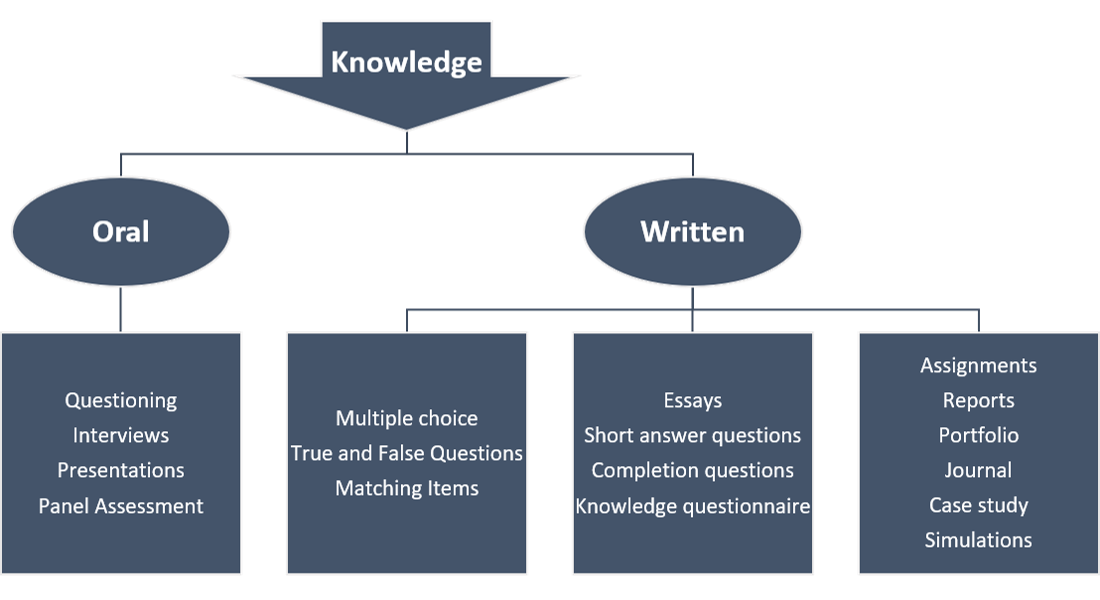Assessing Knowledge and Problem-Solving Ability
Depending on the type of cognitive (knowledge or thinking) skills that needs to be assessed, knowledge can be assessed through many different methods:

Assessing Practical and Technical Skills
Performance based assessments are used when learners must reach a given level of practical skills. The skills necessary to perform the workplace task must be assessed.
Practical assessment methods comprise performance in either:
- The totality of the job
- Work sample
- Skill sample
- Theoretical aspect of practical performance
Total job - Learners are assessed in completing a real job without assistance.
Work sample - Learners are assessed in completing a section of a job.
Skill sample - Learners are assessed in performing sample tasks to show skills relating to the workplace.
Practical - Learners are assessed through questioning and must answer.
Performance - Questions on practical skills.
To find out whether learners can do something, assessors observe and judge performance in terms of:
- The process followed
- The final product; or
- Both of the above
Example:
Process: A learner mixing a batch of spices
Product: The quality of the completed batch
Process and Product: Total job assessment of the mixing process and evaluation of the final product
Checklists and rating scales are popular approaches in assessing practical skill. Care must be taken to ensure that checklists are not simply used to “tick-off” individual tasks.
Checklists should be considered as a method of recording assessment results, rather than a method of assessment.
Assessing Attitudinal Skills and Values
Applied competence in areas such as customer service, client contact and respect for safety are expressed through applied behaviour such as feelings, appreciation, commitment and values.
In the assessment of applied behaviour, assessors are observing and measuring behaviours. For example, a friendly smile could imply that a learner is positive towards customer service.
Similarly, a learner who disregards safety precautions and ignores advice from others, shows negative behaviour towards safety in the workplace.
Some techniques for assessing the affective learning domain include:
- Direct observation of work activities, i.e. checklists
- Indirect observation of work activities, i.e. peer assessment
- Supervisor’s assessments/ratings
- Portfolio of evidence (including evidence from prior achievements)
- Oral questioning
- Knowledge questionnaires
- Self-assessment
- Case studies
- Simulations
- Role-players
